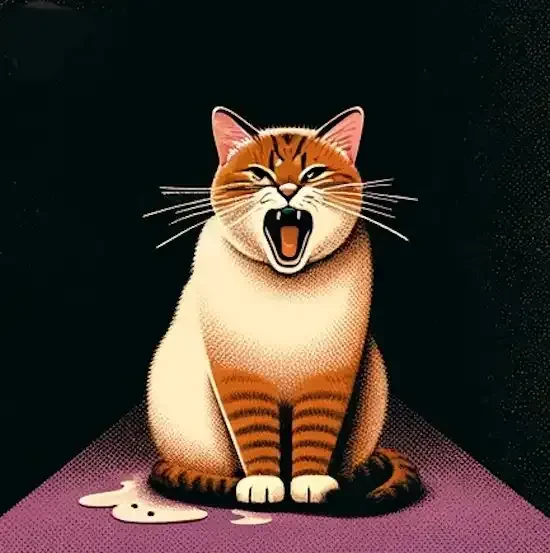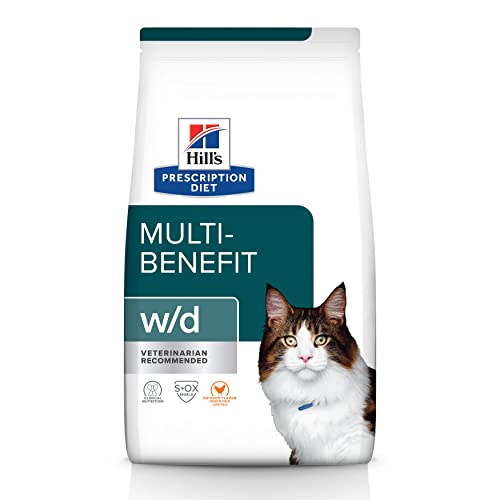Introduction
Cats, with their enigmatic charm and captivating presence, have long held a special place in the hearts and minds of humans. Throughout history, these graceful creatures have been subjects of fascination, reverence, and even worship in various cultures around the world. From ancient Egypt, where they were revered as symbols of divinity, to modern-day internet culture, where they reign as the kings and queens of viral content, cats have left an indelible mark on human society.
Their significance transcends mere companionship; cats have played multifaceted roles in shaping cultures and societies across the globe. Whether as esteemed guardians of grain stores in ancient civilizations, skilled hunters helping control pest populations, or beloved pets providing comfort and companionship to millions, cats have woven themselves into the fabric of human existence in countless ways.
In this article, we embark on a journey to explore the diverse aspects of cats and their profound impact on humans. From their evolutionary history to their roles in art, literature, and popular culture, we delve into the complexities of the feline world. By shedding light on the intricate relationship between humans and cats, we aim to deepen our understanding of these remarkable creatures and celebrate the rich tapestry of experiences they bring to our lives. Join us as we unravel the mysteries and marvels of the world of cats.
The Evolutionary History of Cats
Cats, with their sleek bodies, sharp senses, and innate hunting prowess, are among nature's most formidable predators. To understand the modern cat, we must trace its evolutionary journey through time, from its ancient ancestors to the beloved domestic companions we know today.
Origins of Modern Domestic Cats
The story of domestic cats begins in the ancient Near East, where wildcats (Felis silvestris lybica) roamed the landscapes alongside early human settlements. Evidence suggests that around 9,000 years ago, these wildcats began to form mutually beneficial relationships with humans, drawn by the abundance of rodents attracted to grain stores and human refuse. Over time, a process of self-domestication occurred, leading to the emergence of the domestic cat (Felis catus) as a distinct subspecies.
Evolutionary Adaptations that Make Cats Unique Predators
Cats are renowned for their remarkable adaptations that enable them to excel as hunters. Their agile bodies, keen senses, and retractable claws are finely honed for stalking and capturing prey. One of their most distinctive features is their flexible spine, which allows for stealthy movements and powerful leaps. Their acute hearing and night vision make them highly effective nocturnal hunters, capable of detecting even the faintest sounds and movements in the dark. Additionally, cats possess specialized teeth designed for slicing through flesh and crunching bones, further enhancing their predatory prowess.
Comparison Between Wild and Domestic Cats
While domestic cats share many traits with their wild counterparts, there are notable differences shaped by their divergent evolutionary paths. Wild cats, such as lions, tigers, and cheetahs, have retained their larger size and robust build, adapted for hunting large prey in their natural habitats. In contrast, domestic cats have undergone selective breeding by humans, resulting in a wide variety of breeds with diverse physical characteristics and temperaments. Despite these differences, both wild and domestic cats exhibit similar behaviors and instincts rooted in their shared ancestry, from territorial marking and grooming rituals to solitary hunting habits.
Understanding the evolutionary history of cats provides valuable insights into their biology, behavior, and relationship with humans. By appreciating the remarkable adaptations that have enabled cats to thrive as apex predators for millions of years, we gain a deeper appreciation for these fascinating creatures and the complex interplay between nature and nurture in shaping their evolution.
The Diversity of Cat Breeds
Cats exhibit an astonishing diversity of physical traits, temperaments, and behaviors, thanks to centuries of selective breeding by humans. From the elegant Siamese to the exotic Maine Coon, each breed possesses its own unique charm and characteristics. In this section, we explore the rich tapestry of cat breeds and the fascinating stories behind their origins.
Overview of Different Cat Breeds and Their Characteristics
The world of cat breeds encompasses a vast array of shapes, sizes, coat patterns, and personalities. From long-haired Persians to short-haired Abyssinians, each breed boasts distinctive features that set it apart. Some breeds, like the sphynx, are known for their hairlessness, while others, such as the Scottish Fold, are recognized for their distinctive folded ears. Temperament also varies widely among breeds, with some known for their affectionate and sociable nature, while others are more aloof and independent.
Popular Breeds and Their Origins
Several cat breeds have captured the hearts of cat enthusiasts worldwide, gaining popularity for their unique traits and endearing personalities. The Siamese, with its striking blue eyes and vocal nature, traces its roots to ancient Siam (now Thailand), where it was revered as a sacred companion to royalty. The Persian, with its luxurious coat and gentle demeanor, originated in Persia (modern-day Iran) and quickly became one of the most beloved breeds in the world. Other popular breeds include the Maine Coon, known for its large size and friendly disposition, and the Bengal, prized for its wild appearance and playful nature.
The Role of Selective Breeding in Shaping Cat Breeds
Selective breeding has played a pivotal role in shaping the diverse array of cat breeds we see today. Through careful mating of individuals with desirable traits, breeders have been able to accentuate specific physical and behavioral characteristics, resulting in breeds with distinct appearances and temperaments. This process often involves generations of breeding and meticulous record-keeping to maintain breed standards and ensure the preservation of desirable traits.
However, the practice of selective breeding also raises ethical considerations, as some breeds may be prone to health problems or genetic disorders due to exaggerated traits. Responsible breeders prioritize the health and well-being of their cats, conducting health screenings and genetic testing to minimize the risk of hereditary conditions. Additionally, efforts are underway to promote the adoption of mixed-breed cats from shelters and rescues, highlighting the beauty and uniqueness of all cats, regardless of pedigree.
In summary, the diversity of cat breeds reflects the ingenuity and creativity of humans in shaping the natural world to meet their aesthetic and practical desires. By appreciating the rich history and unique characteristics of each breed, we gain a deeper understanding of the intricate relationship between humans and cats.
Understanding Feline Behavior
Cats are complex creatures with a rich repertoire of behaviors shaped by their evolutionary history and social interactions. In this section, we delve into the fascinating world of feline behavior, exploring the innate instincts inherited from their wild ancestors, their social behaviors and communication methods, as well as common behavioral issues encountered by cat owners and how to address them.
Instinctual Behaviors Inherited from Wild Ancestors
Despite their domestication, cats retain many instinctual behaviors inherited from their wild ancestors. One of the most prominent instincts is their hunting prowess, characterized by stalking, pouncing, and capturing prey. This behavior is not merely about obtaining food but also serves as a form of mental and physical stimulation for cats. Additionally, cats exhibit territorial behaviors, marking their territory with scent glands located on their cheeks, paws, and tail. Scratching furniture and objects is another instinctual behavior aimed at sharpening claws and marking territory.
Social Behaviors and Communication Among Cats
While cats are often portrayed as solitary animals, they are capable of forming complex social structures and relationships with other cats. In multi-cat households, cats establish hierarchies through a combination of posturing, vocalizations, and subtle body language. Purring, meowing, hissing, and growling are among the various vocalizations cats use to communicate with each other and with humans. Body language, such as tail position, ear movement, and facial expressions, also play a crucial role in conveying messages and establishing social bonds.
Common Behavioral Issues and How to Address Them
Despite their endearing qualities, cats may exhibit behavioral issues that can pose challenges for their owners. Common problems include inappropriate urination or defecation, aggression towards humans or other animals, excessive grooming, and destructive scratching. These behaviors can be triggered by various factors, including stress, medical issues, environmental changes, or lack of mental and physical stimulation.
Addressing behavioral issues in cats requires patience, understanding, and sometimes professional guidance. Strategies may include providing enriching environments with plenty of opportunities for play and exploration, addressing any underlying medical issues through veterinary care, and implementing behavior modification techniques such as positive reinforcement training. In some cases, consulting with a veterinarian or animal behaviorist may be necessary to develop a tailored treatment plan.
By gaining insight into the instinctual behaviors, social dynamics, and common issues faced by cats, owners can better understand and nurture their feline companions. Building strong bonds based on trust, respect, and mutual understanding fosters harmonious relationships and enhances the well-being of both cats and humans alike.
Cats as Companions
Cats have long been cherished as companions, offering comfort, companionship, and joy to millions of people around the world. In this section, we explore the unique bond between humans and cats, the myriad benefits of having cats as pets, and the responsibilities that come with cat ownership, along with proper care guidelines to ensure the well-being of our feline friends.
The Bond Between Humans and Cats
The relationship between humans and cats is characterized by mutual affection, trust, and companionship. Unlike some other pets, cats often form deep, intimate bonds with their owners, seeking out their company and offering emotional support in return. This bond is built on a foundation of trust and respect, nurtured through shared experiences, gentle interactions, and positive reinforcement.
Benefits of Having Cats as Pets
The companionship of a cat can bring numerous benefits to both physical and mental well-being. Studies have shown that spending time with cats can reduce stress, anxiety, and depression, while also lowering blood pressure and promoting relaxation. The soothing purr of a contented cat has even been likened to a therapeutic massage, providing comfort and solace in times of need. Additionally, the playful antics and affectionate gestures of cats can bring joy and laughter to our lives, fostering a sense of happiness and fulfillment.
Responsibilities of Cat Ownership and Proper Care Guidelines
Owning a cat is a privilege that comes with important responsibilities to ensure their health, safety, and well-being. Proper care guidelines include providing a nutritious diet tailored to their age, breed, and health needs, along with fresh water and access to clean litter boxes for proper elimination. Regular veterinary check-ups, vaccinations, and preventative care are essential to maintain their health and detect any potential issues early on.
Furthermore, cats require mental and physical stimulation to thrive, including opportunities for play, exercise, and exploration. Enriching their environment with toys, scratching posts, and interactive activities can prevent boredom and encourage natural behaviors. Finally, responsible cat ownership entails providing a safe, secure home environment free from hazards such as toxic plants, household chemicals, and dangerous objects.
By fulfilling these responsibilities and providing attentive, loving care, cat owners can cultivate strong, fulfilling relationships with their feline companions while ensuring their health and happiness for years to come. The bond between humans and cats is a special one, enriched by mutual trust, affection, and shared experiences, making them cherished members of the family.
Cats in Culture and Art
Cats have left an indelible mark on human culture and artistic expression, permeating myths, folklore, religion, art, and literature across diverse civilizations. In this section, we explore the multifaceted roles of cats in mythology, folklore, religion, as well as their depictions in art and literature, uncovering the symbolism and significance they hold in different cultures.
Cats in Mythology, Folklore, and Religion
Throughout history, cats have been revered, feared, and revered as supernatural beings in mythology, folklore, and religion. In ancient Egypt, cats were associated with the goddess Bastet, who was depicted as a lioness or as a woman with the head of a lioness. Bastet was revered as a goddess of home, fertility, and protection, and cats were considered sacred animals symbolizing grace, power, and divine protection.
Similarly, in Norse mythology, the goddess Freyja was often depicted riding in a chariot drawn by cats, emphasizing their association with fertility, love, and magic. In Japanese folklore, the nekomata is a mythical cat with supernatural powers, believed to possess the ability to shape-shift and control the spirits of the dead. Cats also feature prominently in various folktales and superstitions around the world, often portrayed as mysterious, enigmatic creatures with magical powers.
Depictions of Cats in Art and Literature
Cats have been a favorite subject of artists and writers throughout history, inspiring countless works of art and literature. In ancient Egyptian art, cats were frequently depicted in paintings, sculptures, and hieroglyphs, symbolizing prosperity, protection, and the afterlife. In medieval Europe, cats were often portrayed as companions to witches and sorcerers, embodying both the allure of magic and the fear of the unknown.
In literature, cats have been featured in numerous stories, poems, and fables, ranging from Aesop's fables to Edgar Allan Poe's "The Black Cat" and T.S. Eliot's "Old Possum's Book of Practical Cats." Cats are often portrayed as mysterious, independent creatures with a sense of mystery and intrigue, captivating the imagination of readers with their enigmatic charm.
Symbolism and Significance of Cats in Different Cultures
The symbolism of cats varies widely across different cultures, reflecting the diverse attitudes and beliefs surrounding these animals. In ancient China, cats were revered as symbols of good luck and prosperity, believed to bring fortune and wealth to their owners. In Celtic mythology, cats were associated with the spirit world, serving as guides between the realms of the living and the dead.
In modern Western culture, cats are often depicted as symbols of independence, mystery, and intuition, embodying qualities such as curiosity, grace, and resilience. However, attitudes towards cats have also been influenced by superstitions and stereotypes, leading to misconceptions and prejudices against these animals in some societies.
In summary, cats hold a special place in human culture and artistic expression, embodying a rich tapestry of symbolism, mythology, and folklore that spans across civilizations and centuries. By exploring the diverse roles and representations of cats in culture and art, we gain a deeper appreciation for the profound impact these enigmatic creatures have had on human society and imagination throughout history.
The Internet Cat Phenomenon
The internet has witnessed an unprecedented surge in the popularity of cat-related content, from adorable videos to humorous memes, capturing the hearts of millions worldwide. In this section, we explore the rise of cat videos and memes online, their impact on popular culture, and the psychological reasons behind the enduring appeal of cat content.
Rise of Cat Videos and Memes Online
The proliferation of social media platforms and video-sharing websites has provided a global stage for cat lovers to share and celebrate their feline companions. Cat videos, ranging from playful antics to heartwarming moments, have become a ubiquitous presence on platforms such as YouTube, Instagram, and TikTok. Similarly, cat memes—humorous images or videos accompanied by witty captions—have proliferated across social media, spawning countless internet memes and viral sensations.
Impact of Internet Cats on Popular Culture
Internet cats have permeated popular culture in unprecedented ways, becoming cultural icons and influencing trends in fashion, advertising, and entertainment. From "Grumpy Cat" and "Keyboard Cat" to "Nyan Cat" and "Lil Bub," internet-famous felines have amassed legions of fans and inspired merchandise, books, and even music videos. The widespread popularity of internet cats has also led to the emergence of cat-centric events such as CatCon, where fans gather to celebrate all things feline.
Psychological Reasons Behind the Appeal of Cat Content
The appeal of cat content on the internet can be attributed to a combination of psychological factors that resonate with viewers on a deeply emotional level. Cats possess a unique blend of characteristics that make them inherently captivating, from their playful antics and expressive faces to their endearing quirks and mischievous behavior. Watching cat videos and memes can evoke feelings of joy, nostalgia, and comfort, providing a welcome escape from the stresses of daily life.
Moreover, cats tap into universal themes of curiosity, independence, and resilience that resonate with people across cultures and demographics. The unpredictability and spontaneity of cat behavior add an element of suspense and surprise, keeping viewers engaged and eager for more. Additionally, the internet provides a sense of community and connection for cat lovers, allowing them to share their passion and bond over their shared appreciation for these lovable creatures.
In summary, the internet cat phenomenon reflects our deep-seated fascination with cats and the profound impact they have on our lives. From providing moments of levity and laughter to fostering a sense of community and belonging, internet cats have become a beloved staple of online culture, enriching our digital experiences and bringing joy to millions around the world.
Cats and Health
Cats not only enrich our lives with their companionship and charm but also contribute to our overall health and well-being in various ways. In this section, we explore the therapeutic benefits of interacting with cats, the management of cat allergies, and the potential risks of zoonotic diseases transmitted by cats, along with prevention measures to ensure the health and safety of both humans and felines.
Therapeutic Benefits of Interacting with Cats
Interacting with cats has been shown to have numerous therapeutic benefits for both physical and mental health. Spending time with cats can reduce stress, anxiety, and depression, promoting relaxation and a sense of calm. The act of petting a cat releases feel-good hormones such as oxytocin and serotonin, which can lower blood pressure and improve mood. Additionally, the rhythmic purring of a contented cat has been found to have a soothing effect on the nervous system, promoting feelings of comfort and well-being.
Cat Allergies and Their Management
While cats provide many health benefits, they can also trigger allergies in susceptible individuals. Cat allergies are typically caused by proteins found in cat dander, saliva, and urine, which can elicit allergic reactions such as sneezing, itching, watery eyes, and respiratory problems. Managing cat allergies involves minimizing exposure to allergens through regular grooming of the cat, frequent vacuuming and cleaning of the home, and using air purifiers and allergen-proof bedding.
In severe cases, allergists may recommend allergy medications or immunotherapy (allergy shots) to desensitize the immune system to cat allergens. Despite the challenges of cat allergies, many allergic individuals find ways to coexist with their feline companions by implementing effective allergy management strategies.
Zoonotic Diseases Transmitted by Cats and Prevention Measures
Cats can transmit zoonotic diseases—illnesses that can be passed from animals to humans—through direct contact, contaminated surfaces, or bites and scratches. Common zoonotic diseases associated with cats include toxoplasmosis, cat scratch fever (bartonellosis), and ringworm. To prevent the transmission of zoonotic diseases, it is essential to practice good hygiene, including washing hands thoroughly after handling cats or cleaning litter boxes, avoiding contact with stray or feral cats, and keeping cats indoors to minimize exposure to pathogens.
Regular veterinary care, including vaccinations, deworming, and flea control, is also crucial for maintaining the health of cats and reducing the risk of zoonotic disease transmission. By taking proactive measures to protect both human and feline health, cat owners can enjoy the many benefits of cat companionship while minimizing potential health risks.
In summary, cats contribute to our health and well-being in myriad ways, offering comfort, companionship, and joy to millions of people worldwide. By understanding and addressing potential health concerns associated with cats, we can foster a safe and nurturing environment for both humans and their beloved feline friends, ensuring a harmonious relationship built on mutual care and respect.
Conservation Efforts for Wild Cats
Wild cats, the majestic predators of the natural world, face numerous threats to their survival due to habitat loss, poaching, and human-wildlife conflict. In this section, we explore the challenges confronting wild cat populations, the conservation initiatives aimed at protecting endangered species, and the importance of preserving their habitats for the health of ecosystems and the well-being of future generations.
Threats Facing Wild Cat Populations
Wild cat populations are under siege from a variety of threats, primarily driven by human activities. Habitat loss and fragmentation, resulting from deforestation, urbanization, and agricultural expansion, deprive wild cats of vital hunting grounds and disrupt their natural behaviors. Poaching and illegal wildlife trade pose additional threats, with cats hunted for their fur, bones, and body parts prized in traditional medicine and luxury markets.
Human-wildlife conflict also jeopardizes wild cat populations, as encounters with humans and livestock can lead to retaliatory killings and habitat degradation. Climate change further exacerbates these threats, altering ecosystems and reducing prey availability, pushing wild cats to the brink of extinction in some regions.
Conservation Initiatives to Protect Endangered Wild Cat Species
Conservation organizations and governments around the world are working tirelessly to protect endangered wild cat species and their habitats through a variety of initiatives. These efforts include establishing protected areas, such as national parks and wildlife reserves, where cats are afforded legal protection from hunting and habitat destruction. Conservationists also engage in habitat restoration projects to rehabilitate degraded landscapes and create corridors for wildlife movement.
Additionally, conservation breeding programs and captive breeding efforts play a crucial role in bolstering wild cat populations and reintroducing individuals into their native habitats. Community-based conservation initiatives involve local communities in conservation efforts, promoting sustainable livelihoods and fostering coexistence between humans and wild cats.
Importance of Preserving Wild Cat Habitats
Preserving wild cat habitats is not only essential for the survival of these iconic predators but also for the health of entire ecosystems. Wild cats play a vital role in maintaining ecological balance by regulating prey populations and preventing the spread of disease. As apex predators, they influence the behavior and distribution of other species, contributing to biodiversity and ecosystem resilience.
Furthermore, wild cat habitats provide essential ecosystem services, such as carbon sequestration, water purification, and soil stabilization, benefiting humans and wildlife alike. Protecting these habitats preserves the integrity of natural ecosystems and ensures the long-term sustainability of vital resources for future generations.
In summary, conservation efforts for wild cats are critical for safeguarding these magnificent creatures and the ecosystems they inhabit. By addressing the threats facing wild cat populations and preserving their habitats, we can uphold the intrinsic value of biodiversity and secure a better future for both humans and wildlife on our planet.
Conclusion
In this exploration of the world of cats, we have journeyed through the intricate tapestry of feline history, behavior, culture, and conservation. From the evolutionary origins of modern cats to their enduring presence in popular culture and the wild, cats captivate our imaginations and enrich our lives in countless ways. As we conclude our exploration, let us recap the key points discussed and reflect on the multifaceted relationship between humans and cats, while also encouraging further exploration and appreciation of these remarkable creatures in all their forms.
Throughout history, cats have held a special place in human society, revered as symbols of divinity, companionship, and resilience. From ancient civilizations to modern-day internet culture, cats have woven themselves into the fabric of human existence, leaving an indelible mark on our hearts and minds.
We have examined the diverse roles of cats as companions, hunters, and cultural icons, exploring their unique behaviors, therapeutic benefits, and conservation challenges. From the soothing purr of a contented cat to the awe-inspiring grace of a wild predator, cats embody a rich tapestry of traits and characteristics that inspire admiration and affection.
The relationship between humans and cats is a multifaceted one, built on a foundation of mutual respect, trust, and companionship. Cats provide comfort, joy, and companionship to millions of people worldwide, enriching our lives with their playful antics, loyal companionship, and unwavering affection.
As we conclude our exploration, let us celebrate the beauty, diversity, and resilience of cats in all their forms. Let us continue to cherish and care for these magnificent creatures, fostering a deeper understanding and appreciation of their role in the natural world. Whether as beloved pets, majestic predators, or cultural icons, cats remind us of the profound interconnectedness of all life on Earth and the importance of preserving and protecting the wonders of the natural world for generations to come.
In the spirit of curiosity and compassion, let us embark on a journey of further exploration and discovery, embracing the mystery and magic of cats in all their forms. Together, we can continue to learn, grow, and deepen our appreciation for these remarkable creatures, ensuring a brighter future for cats and humans alike.







